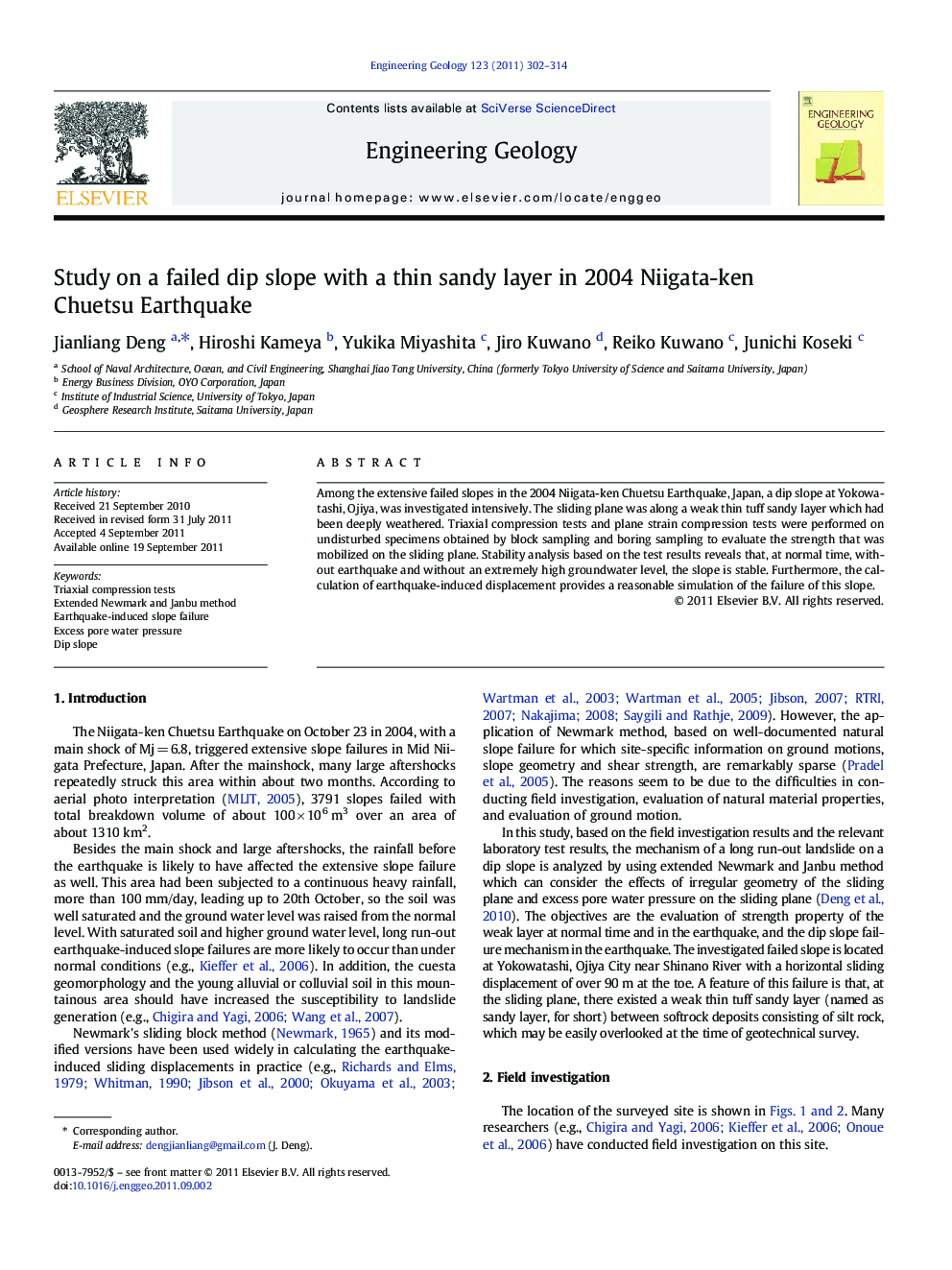| Article ID | Journal | Published Year | Pages | File Type |
|---|---|---|---|---|
| 4744064 | Engineering Geology | 2011 | 13 Pages |
Among the extensive failed slopes in the 2004 Niigata-ken Chuetsu Earthquake, Japan, a dip slope at Yokowatashi, Ojiya, was investigated intensively. The sliding plane was along a weak thin tuff sandy layer which had been deeply weathered. Triaxial compression tests and plane strain compression tests were performed on undisturbed specimens obtained by block sampling and boring sampling to evaluate the strength that was mobilized on the sliding plane. Stability analysis based on the test results reveals that, at normal time, without earthquake and without an extremely high groundwater level, the slope is stable. Furthermore, the calculation of earthquake-induced displacement provides a reasonable simulation of the failure of this slope.
► The strong earthquake induced the slope failure► The planar failed slope is along a weak thin tuff sandy layer► Tests were performed on undisturbed specimens containing a weak thin layer► Extended Newmark and Janbu method could simulate the large residual displacement.
